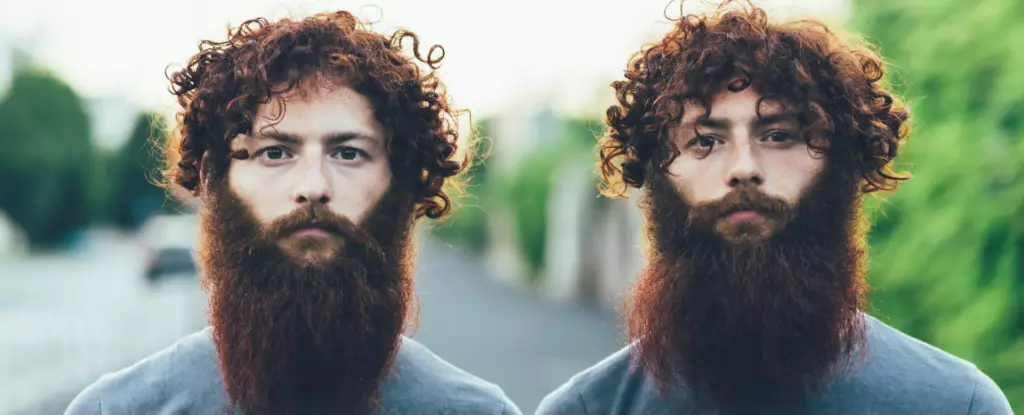Throughout the ages, hair and nails have transcended their biological functions, acting as symbols that relay complex social messages. These extensions of our physique illustrate not only our identities but also reflect our hierarchical standing in society. The demarcation between the caveman and the businessman can, in part, be attributed to the visible care of one’s appearance, with hair and nails acting as the canvas for this self-expression. As we collectively faced the strictures of COVID-19 lockdowns, an unusual yet communal recognition began to surface: the expertise of hairdressers and nail technicians took on a newfound level of importance. Popular figures, including Taylor Swift, undertook the task of self-grooming, indicating an inherent blend of humor and necessity as the world grappled with confinement.
This societal shift prompts a fascinating inquiry: what if we altogether relinquished our grooming rituals? Would our hair and nails continue to flourish unchecked? Scientifically speaking, the answer is affirmative. On average, human hair grows approximately one centimeter monthly, while fingernails extend by just over three millimeters in the same time frame. Left to their own devices, hair and nails could indeed reach extraordinary lengths, leading to records that could rival myths and tales of yore.
The Record Holders: A Glimpse into the Extremes
Consider for instance Aliia Nasyrova, renowned as the “Ukrainian Rapunzel,” who holds the world record for the longest hair on a living individual, measuring a staggering 257.33 centimeters. In juxtaposition, Diana Armstrong from the United States manages to break the record for the longest fingernails, which accumulate to a whopping 1,306.58 centimeters. These extreme cases highlight not merely individual traits but also raise questions about the biological mechanisms underlying hair and nail growth, prompting us to delve deeper into the science of our body’s appendages.
The fundamental components of hair and nails, keratin proteins, play an integral role in this narrative. Both develop from matrix cells situated beneath the skin’s surface and exhibit distinct growth patterns. The process of nail growth is characterized by a continuous division of matrix cells, pushing older cells forward, while the hair undergoes a more complex cycle due to its structural intricacies. At the base of each hair follicle lies the hair bulb, a crucial nexus responsible for dictating the hair cycle through various stages of growth, transition, repose, and shedding.
Understanding the intricacies of hair growth involves deciphering the four established phases:
1. **Anagen Phase**: This is the active growth phase, lasting between two to eight years.
2. **Catagen Phase**: A transitional span where hair growth slows, typically extending for about two weeks.
3. **Telogen Phase**: A resting stage, enduring two to three months, during which no new growth occurs.
4. **Exogen Phase**: The shedding period, during which old hair falls away to be replaced by new growth.
Intriguingly, not all follicles undergo these phases concurrently, averting the mass baldness that could ensue if they did. Generally, only about 10% of our hair follicles are in a resting state simultaneously. While the average individual loses about 100 to 150 strands of hair each day, with an estimated 100,000 hairs adorning the average scalp, it becomes apparent how this shedding remains mostly unnoticed.
At this juncture, one must acknowledge the weight of genetics in influencing hair and nail growth. Observations reveal familial similarities in growth rates, suggesting hereditary factors play a decisive role. In addition to genetic inheritance, various external factors could markedly impact the growth potential of our hair and nails. Age, for instance, plays a pivotal role: as metabolic processes and cellular mechanisms slow with maturity, younger individuals generally experience more robust growth rates.
Hormonal fluctuations also serve as significant determinants, particularly during pregnancy, where hair and nail growth often accelerate, while the onset of menopause can trigger a decline in these growth rates. Nutrition, too, shapes the strength and capability for growth, underscoring the necessity of a balanced diet rich in essential nutrients. Deficiencies in vital minerals like iron and zinc can obstruct normal growth cycles, demonstrating the interconnectedness of diet and bodily health.
The Myths Surrounding Growth: Dispelling Fallacies
A persistent and fascinating myth ties the idea of hair and nail growth to the post-mortem experience. Contrary to popular belief, hair and nails do not continue to grow after one passes away; rather, the appearance of growth is attributed to dehydration and skin shrinkage. Morticians are acutely aware of these physical changes and often employ tissue fillers to alleviate this optical illusion.
Ultimately, whether alive or deceased, the care for hair and nails remains an inseparable aspect of human experience. Their growth encapsulates an intricate interplay of biology, culture, and perception, a perpetual journey of maintenance that reflects our evolving identities within the complex fabric of society.


Leave a Reply